A Film for Our Time
In which Norm rings in the new year with Warner's 4K restoration of David Fincher's SEVEN, and finds it still has teeth.
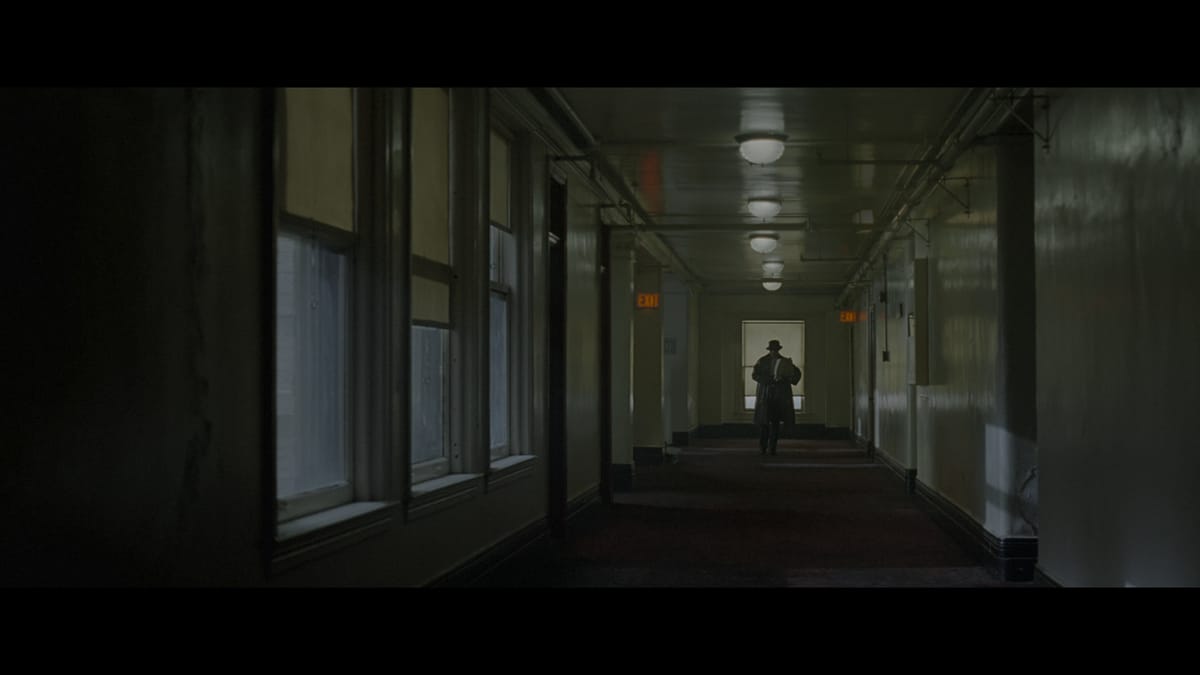
The most distressing thing about watching David Fincher’s Seven thirty years later is that it feels … current. Not relevant or immediate or prophetic in the rear view: It feels contemporary, as though it was shot yesterday. Maybe Brad Pitt and Morgan Freeman look younger than they should, but everything about this movie – from its look to its pacing to its debate about the value of a moral consciousness in a world that has no time for such things – feels very, very 2025.
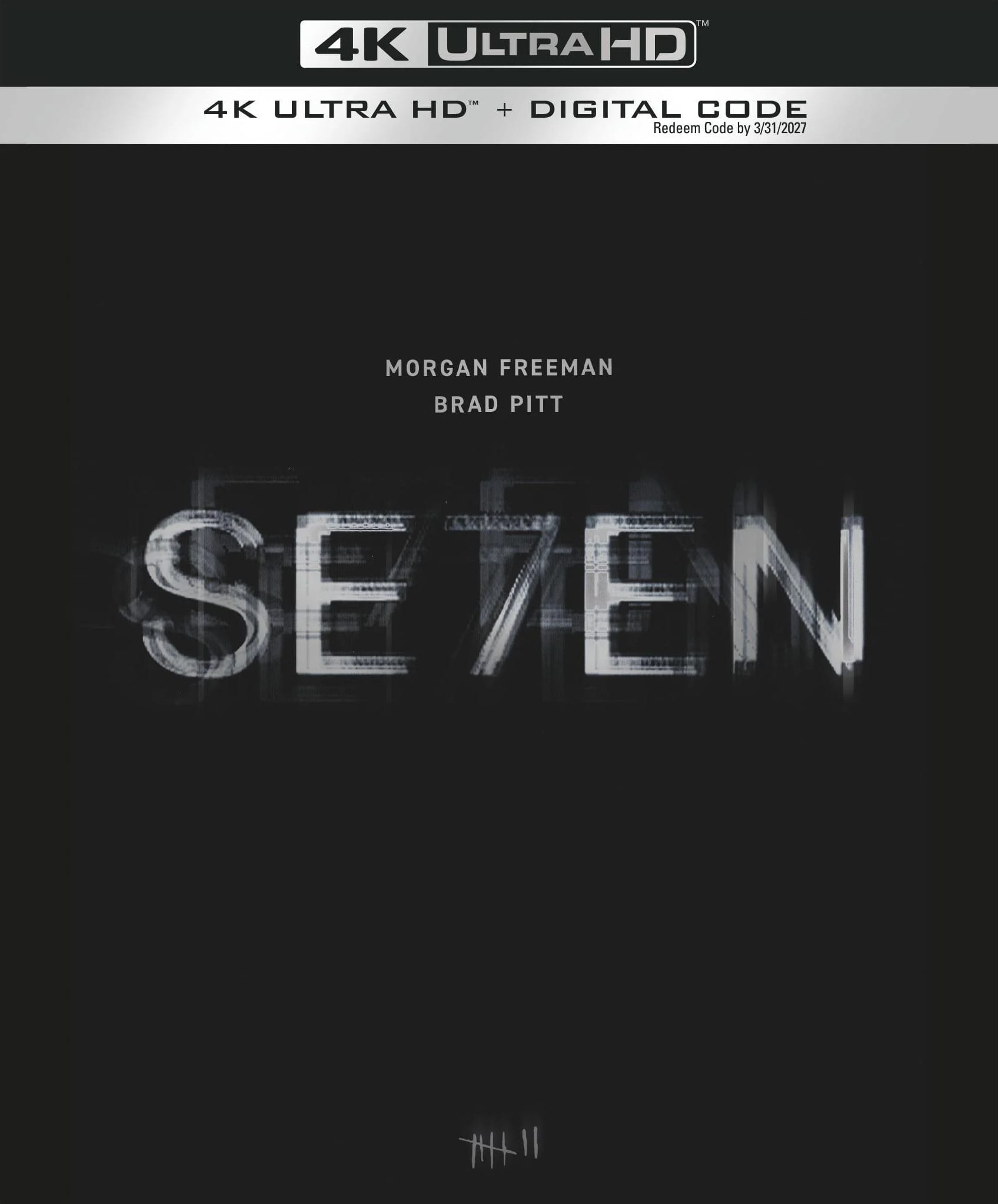
I don’t think Fincher made Seven as prophecy, or even as a warning. I think he just wanted to make a thriller, and one that gave him the space to demonstrate his craft and his talent after the debacle of Alien 3. He succeeded beyond his wildest dreams; Seven now stands as a definitive accomplishment in its genre, a film that arguably paves the way for Saw and its torture-porn ilk while also demonstrating that none of those movies have anything to say beyond simple nihilism. Seven does what all great art does: It makes its themes and message personal, visceral. I’ve seen Seven half a dozen times over the decades, and I still spent the last act with my stomach in knots. We feel this movie.
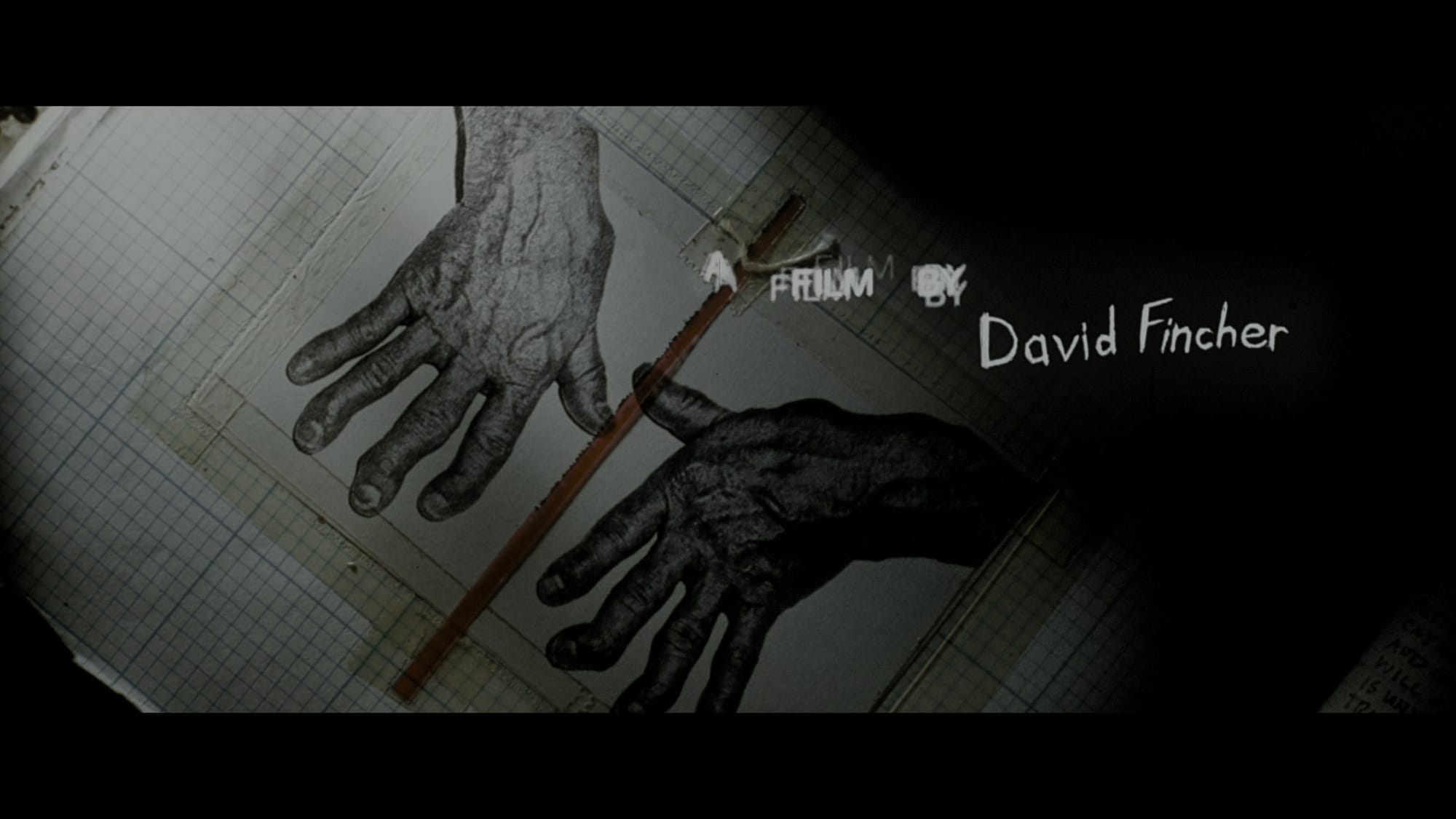
The premise of Andrew Kevin Walker’s screenplay is infernally simple: Over the course of a week, a detective on the verge of retirement and the kid who’s going to replace him try to apprehend a maniac whose murders are inspired by the Seven Deadly Sins. The cops do not like each other at first: Somerset, played by Morgan Freeman, is a weary cynic who sees this killer as a symptom of a world depraved beyond redemption, while Mills, played by Brad Pitt, is a hotshot who sees the killer as nothing more than a nutjob to be trapped and locked away. They’re both right. They’re both wrong.
Screenwriters and studios spent most of the ’90s chasing the crossover success of Jonathan Demme’s exquisite procedural The Silence of the Lambs, in much the same way that The Last of the Mohicans kickstarted a wave of period action epics like Braveheart, Rob Roy and Gladiator. On the surface, Seven looked like just another clone, and honestly? It could have been.
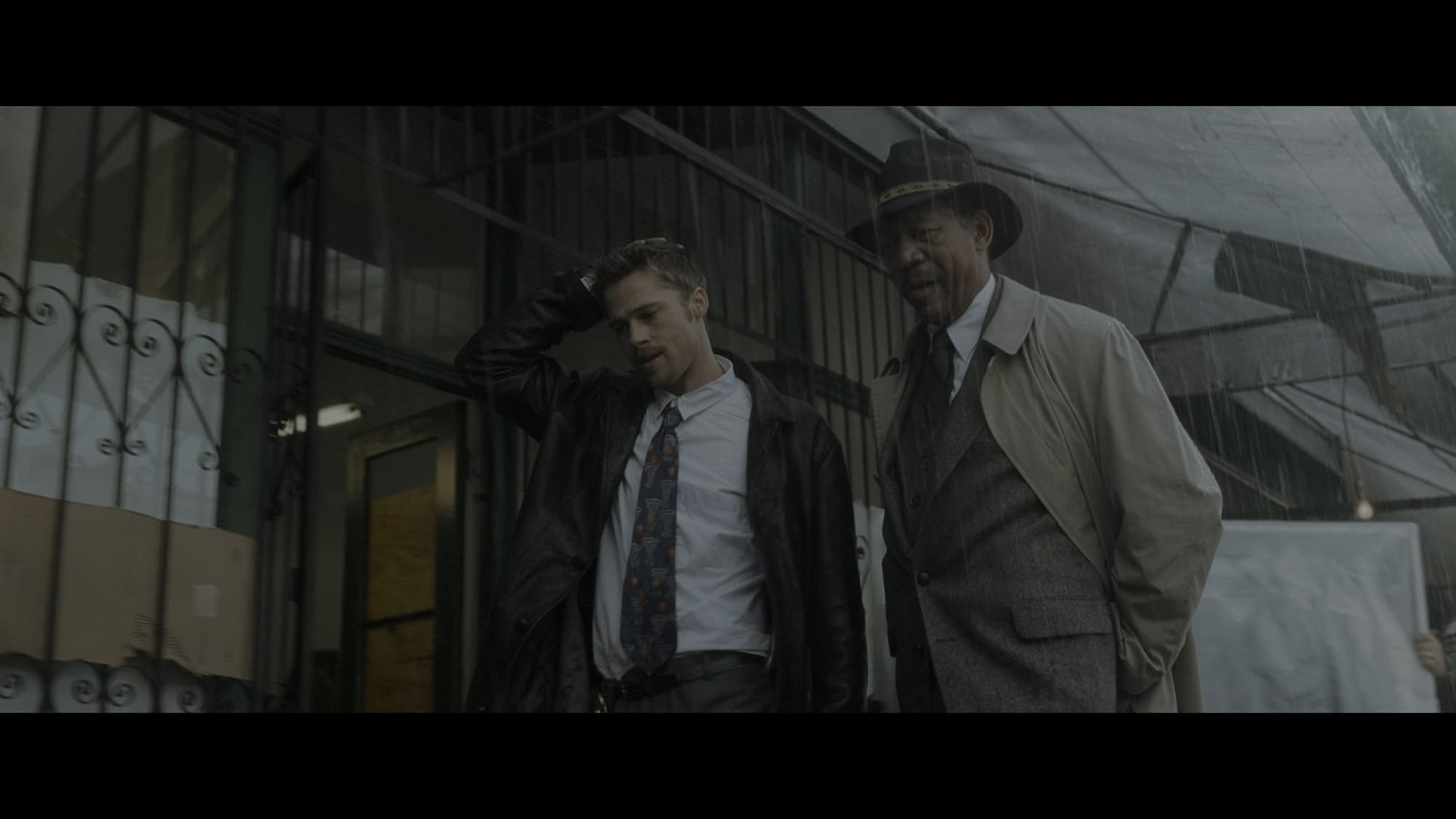
Had Walker’s script found its way into less capable hands, this might have been just another high-concept thriller, the sort of thing that used to slip into the megaplex to middling reviews, shrugged off by audiences and forgotten within weeks. Think of Jon Amiel’s slick programmer Copycat, which followed Seven into theaters about a month later. It wasn’t bad, but it was indeed just another Lambs knockoff. Seven was something else.
At its core, yes, the film is another procedural – and one even more distanced from its villain than Demme’s. Thomas Harris’ cat-and-mouse books shift their focus between his FBI protagonists and the monsters they hunt; in Seven, we only know John Doe by his deeds, not meeting him until Somerset and Mills do. The film itself cloaks Doe in darkness and mystery, to the point that the actor playing him isn’t even billed in the opening credits. (Fun fact: The casting was blown for us at the press screening when the publicists handed out press notes with “and [redacted] as John Doe” printed directly under the film’s title. I didn’t even know it was supposed to be a surprise; maybe that’s why I’m still protecting it here.) Seven is something new: The first forensic thriller.
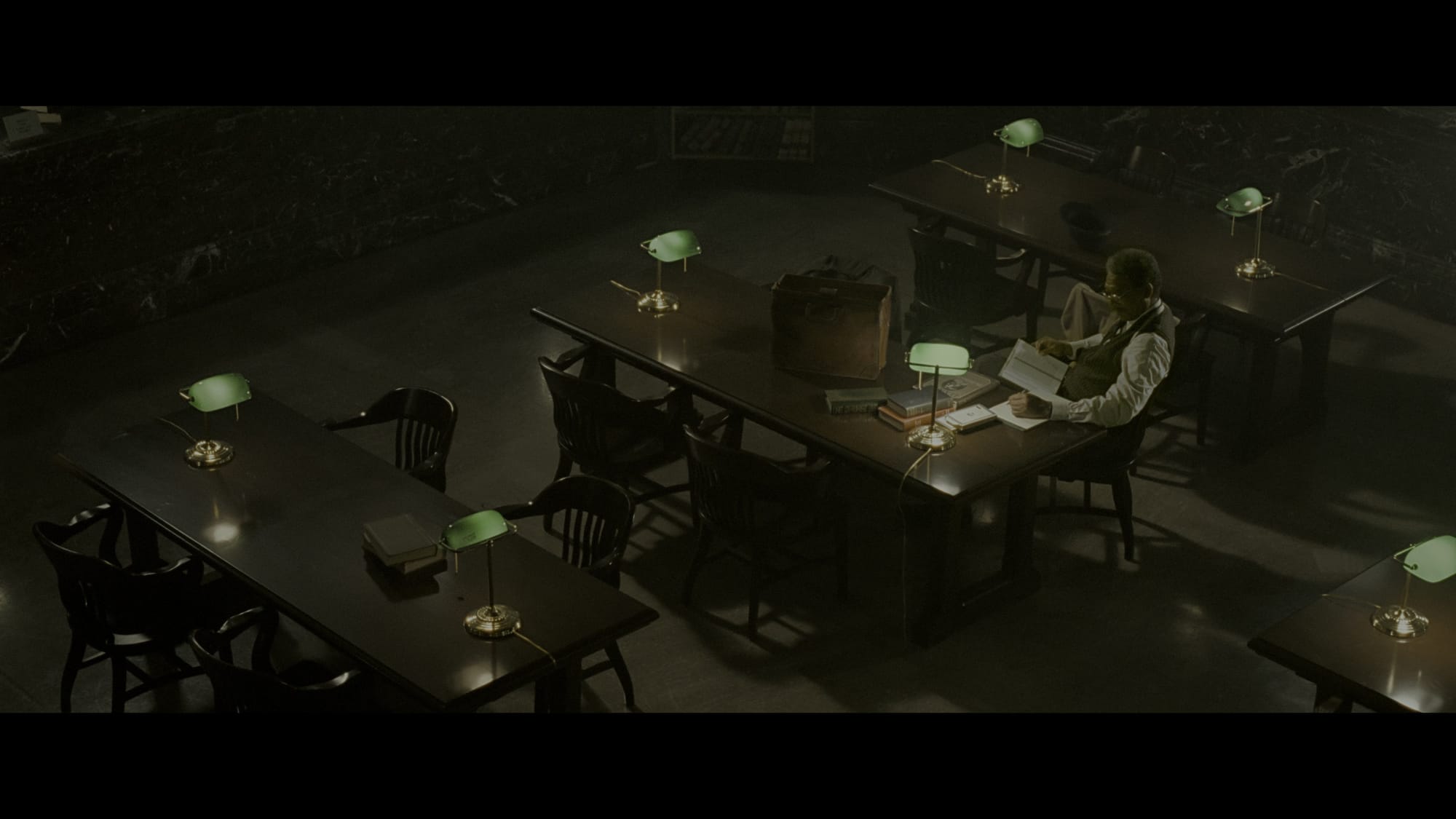
If Fincher borrows anything from Demme, it’s the sense of gathering mania. The Silence of the Lambs is all about Clarice Starling trying to hold herself together as she faces one horror after another; Jodie Foster’s rigidity conveys the feeling of a woman trying to stave off a panic attack. Courage is knowing you’re scared and pressing on anyway. In Seven, it’s the film itself that’s building to a manic episode: Darius Khondji’s camera is almost always level and calm, observing both carnage and conversation at a professional remove.
The sole moment of genuine happiness we get to see – Mills playing with “the kids” – is shot at a distance, through a glass door, from Somerset’s bemused perspective. It’s the opening titles, designed and produced by a brilliant young kid named Kyle Cooper, which promise violence and derangement; Fincher takes his time delivering on that promise, but jesus christ, when he does.
I was worried, rewatching Seven now, that it might be diminished by time. We know how it ends, after all, and so many movies have tried to repeat what Fincher achieved. Morgan Freeman played so many cops and detectives after this – and before, if I’m being honest – that his performance might read differently now; Brad Pitt and Gwyneth Paltrow might look like puppies after thirty years. Maybe the aesthetic would feel dated; maybe the makeup effects would seem clunky. Maybe the ending wouldn’t have the kick it did in the fall of 1995.
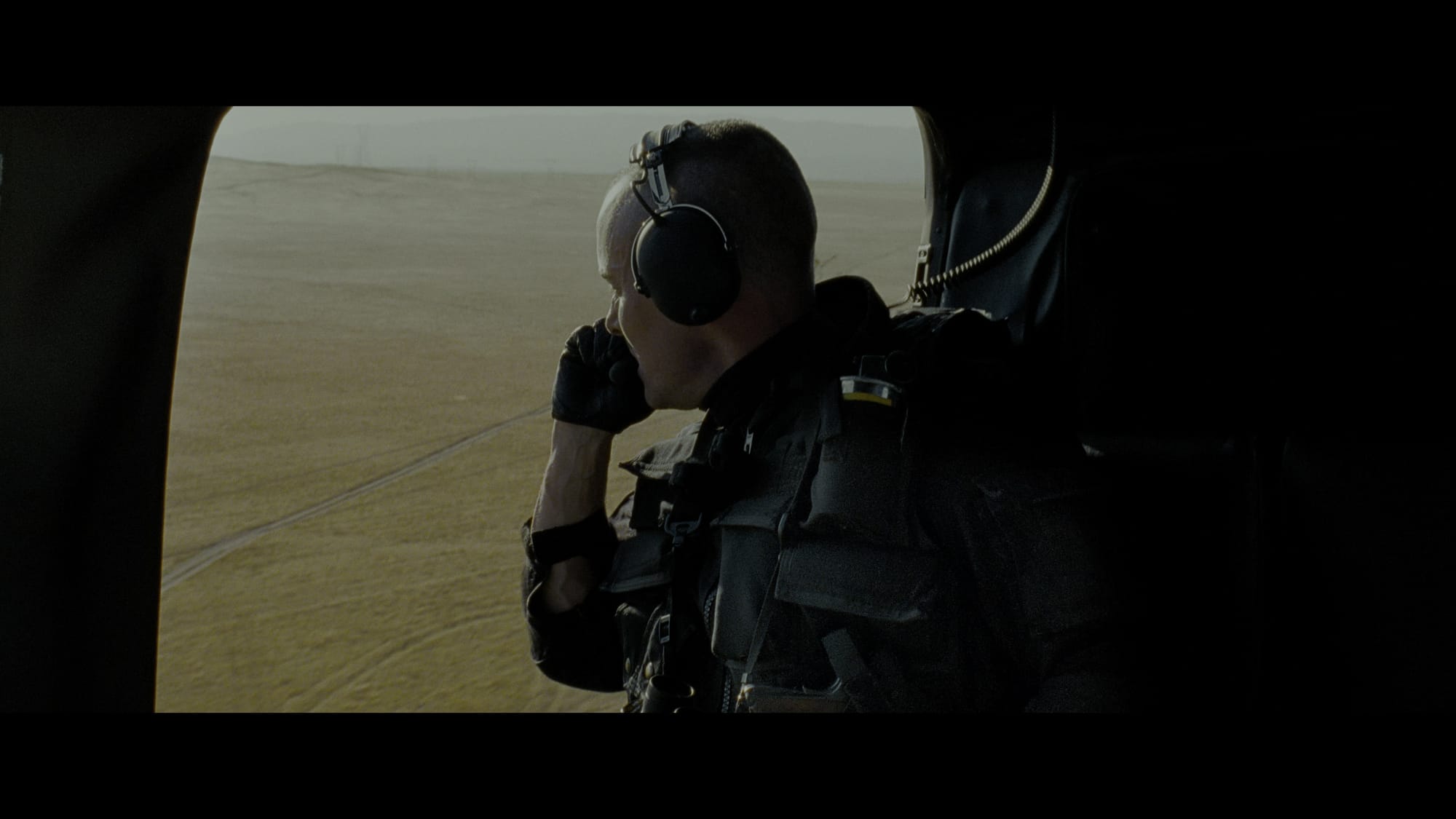
But no, Seven hasn’t aged a day. Weirdly enough, in a film that’s thought to be all style, it turns out the performances are the key, and they’re rock-solid. You can feel Somerset’s weariness and impatience in Freeman’s bones, as well as a heavy dread that starts builds within him long before they have Doe in custody. Pitt channels Mills’ impulsiveness and frustration into an excitable physicality, and gives him a childish habit of trying to joke his way out of his mistakes. Paltrow, who’d made just a handful of films at that point – appearing most memorably in Malice and Flesh and Bone – gives the film its heart as Mills’ conflicted wife Tracy, who isn’t adjusting well to city life but forges an immediate connection with Somerset … which Freeman plays with a lovely graciousness, surprised to discover he still has the capacity to like someone.
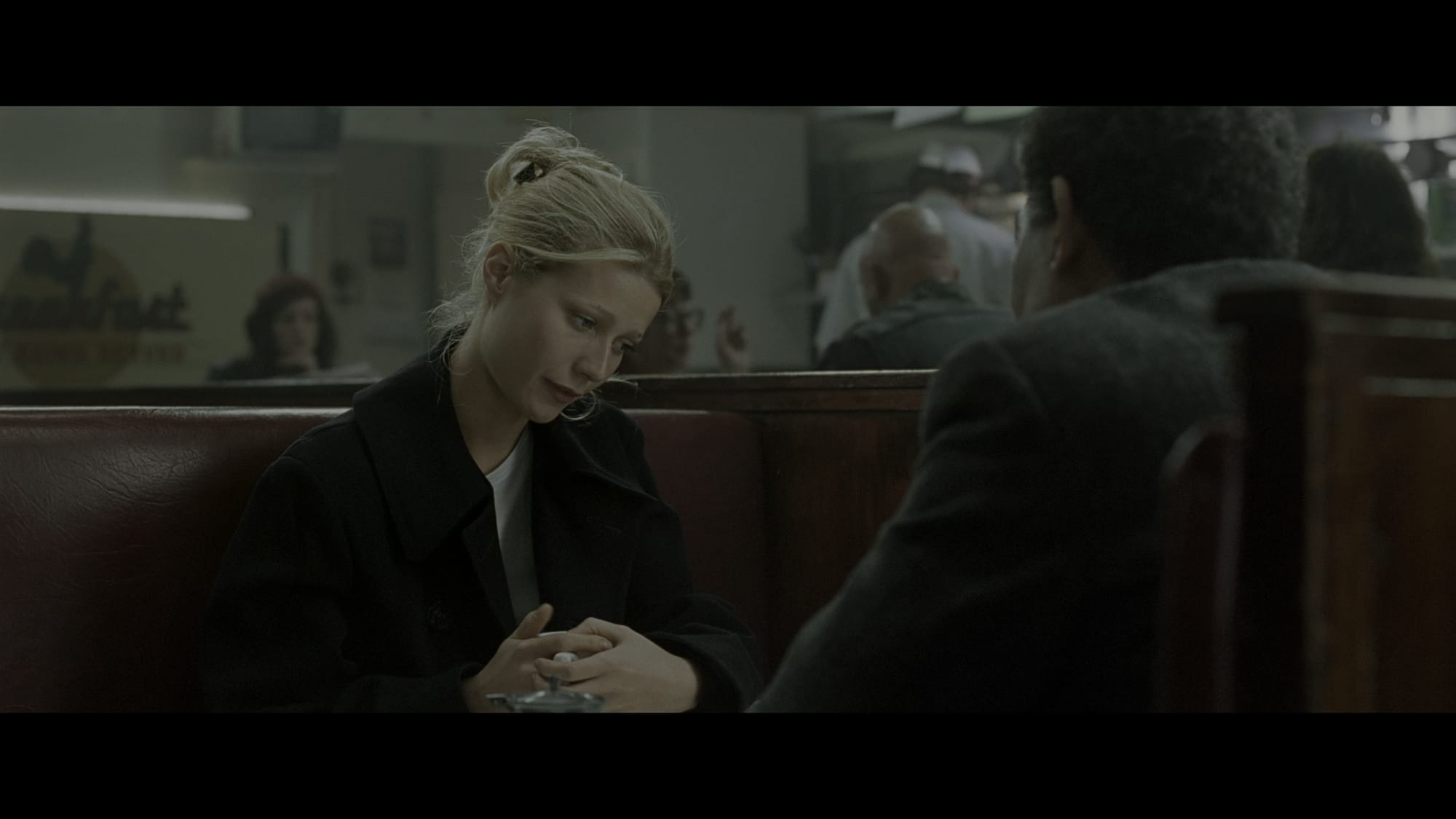
And all that character development is there to set up that ending, the mechanics of which I will not spoil even though I’m certain you know it beat for beat and line by line. What I will discuss, and what does feel like genius, is the way Fincher tortures us with it in the exact same way John Doe works his victims over.
Seven’s final movement is beautiful, implacable, and obscene, starting with a beautifully delivered ice-breaker (“I didn’t do that”) before dragging us into hell alongside Somerset and Mills as Doe’s plan becomes horribly personal. You can crab about the logistics, as plenty of people did, but it all makes sense in the moment: We’re forced to share Mills’ loss on an awful, intimate level, and everything that happens around it becomes a miasma of confusion and panic. That flash-frame thrusts us inside his head with an almost palpable force; sometimes I wonder if that was the thing Fincher had to fight for the hardest. It’s the cruelest thing in the whole film.
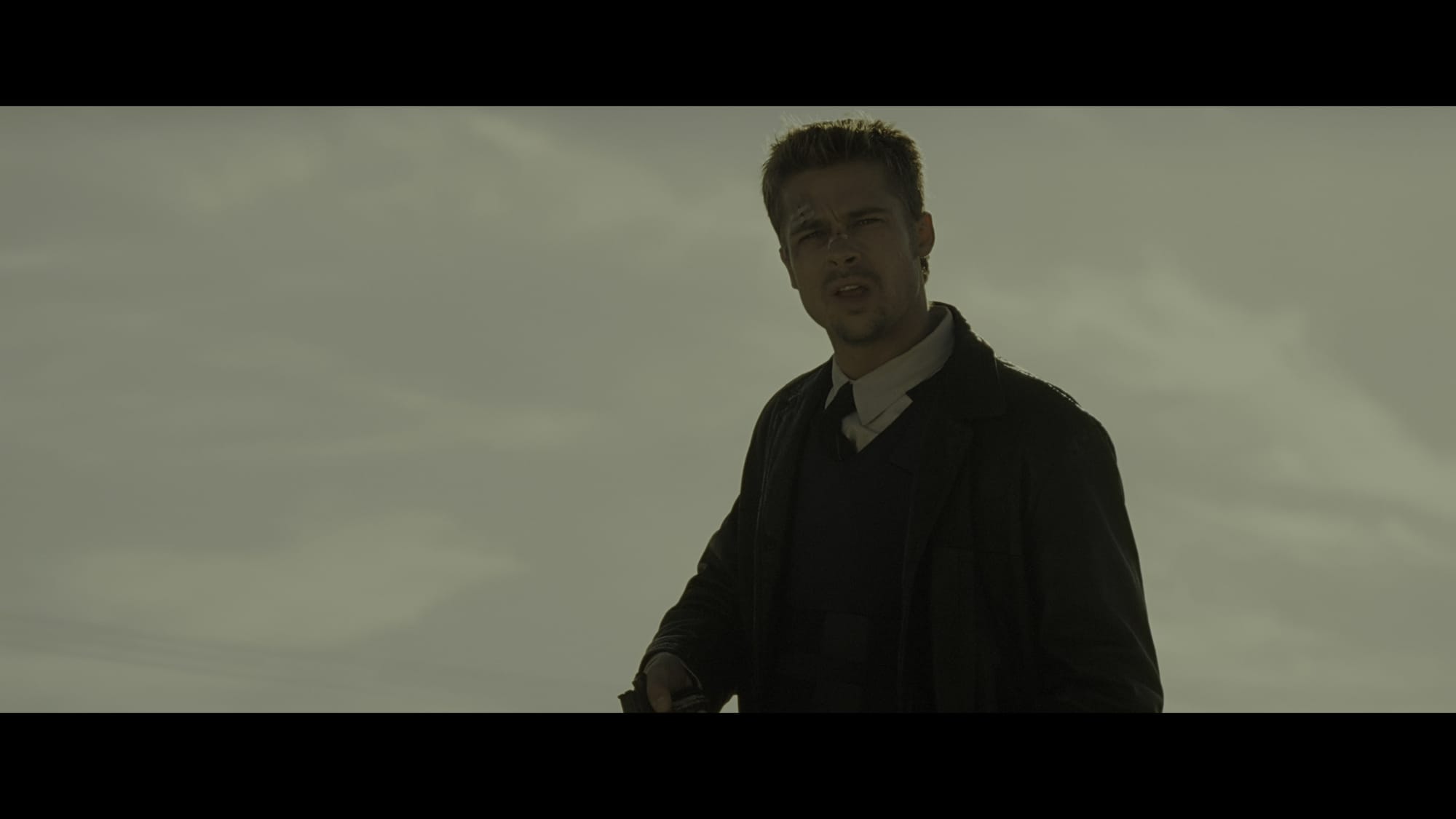
It’s a genuinely sickening climax, played out beautifully and without any sense of victory or catharsis. Indeed, the action that would be cathartic in any other procedural is the absolute wrong choice in this one; that’s why Fincher shoots it from a distance. We’re not allowed to enjoy this. Nobody wins. And the coda, with that perfect Hemingway paraphrase, leaves us in the dark. We’re still there, fighting.
I used to think Seven was pretty good. I’m starting to believe it’s a masterpiece.
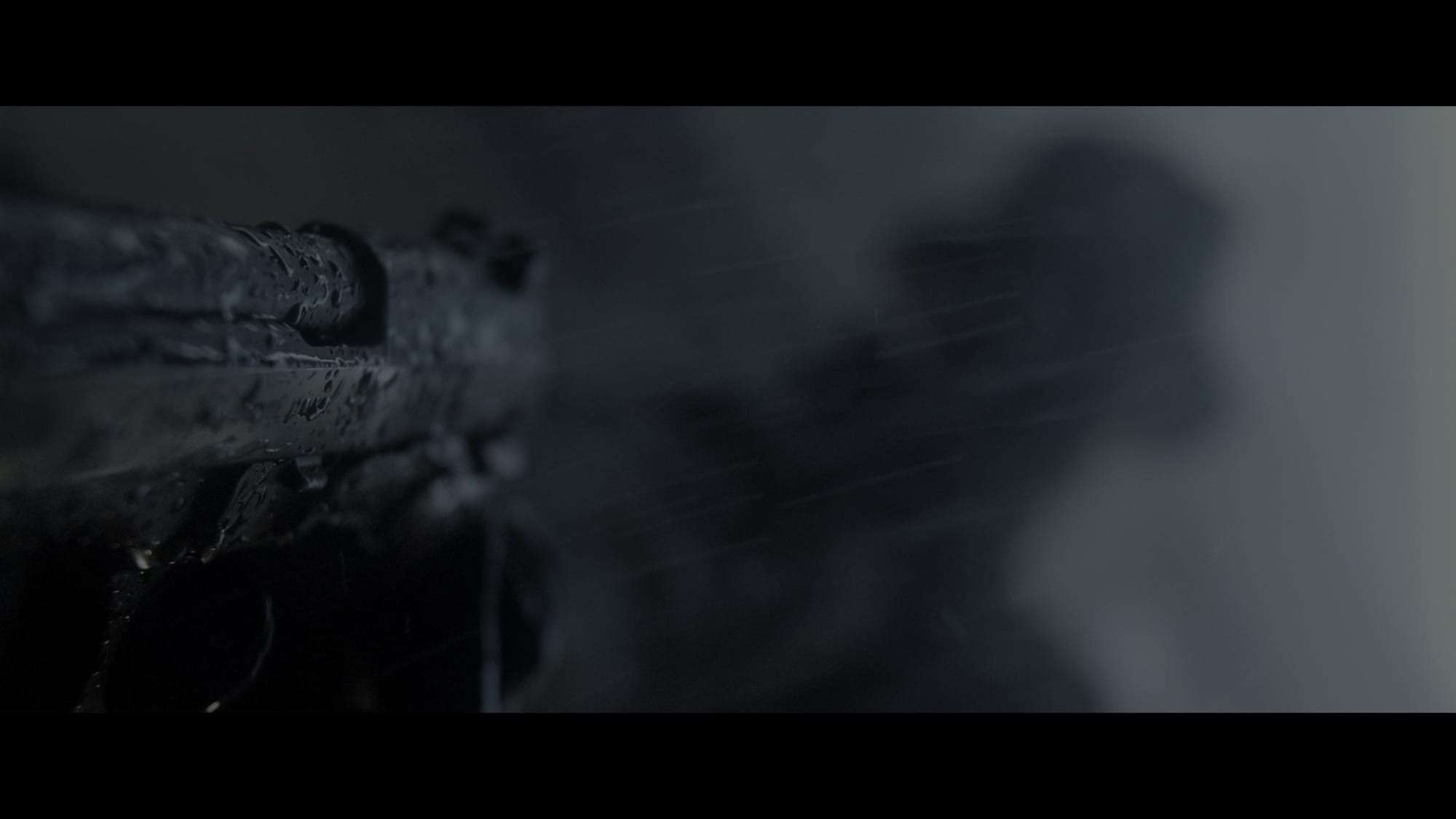
Warner’s new 4K edition makes a pretty great case for that, with an absolutely beautiful UHD restoration of the feature. Seven has had a number of different incarnations over the decades – a Criterion LaserDisc, a New Line special-edition DVD, Warner’s earlier Blu-ray – and no two of them look exactly alike. (With the exception of a horrible early Blu-ray from Alliance – sourced from an interlaced HDTV master, with the frame opened up to 1.78:1 – Fincher has overseen all of them, tweaking the image and mix to suit his preference of the moment.)
The 4K Seven is similarly, subtly tweaked; certain shots have been sharpened, a couple of digital effects have been added, the rainy weather that plagues the investigation is now better defined. (He went into some detail about his thinking in a Variety interview last week.)
If you want to complain about these things, I won’t scold you, but none of Fincher’s alterations distracted me from the performances or the storytelling, and that’s all that mattered to me. I’m honestly much more curious to see what he does to Panic Room when that one arrives next month.
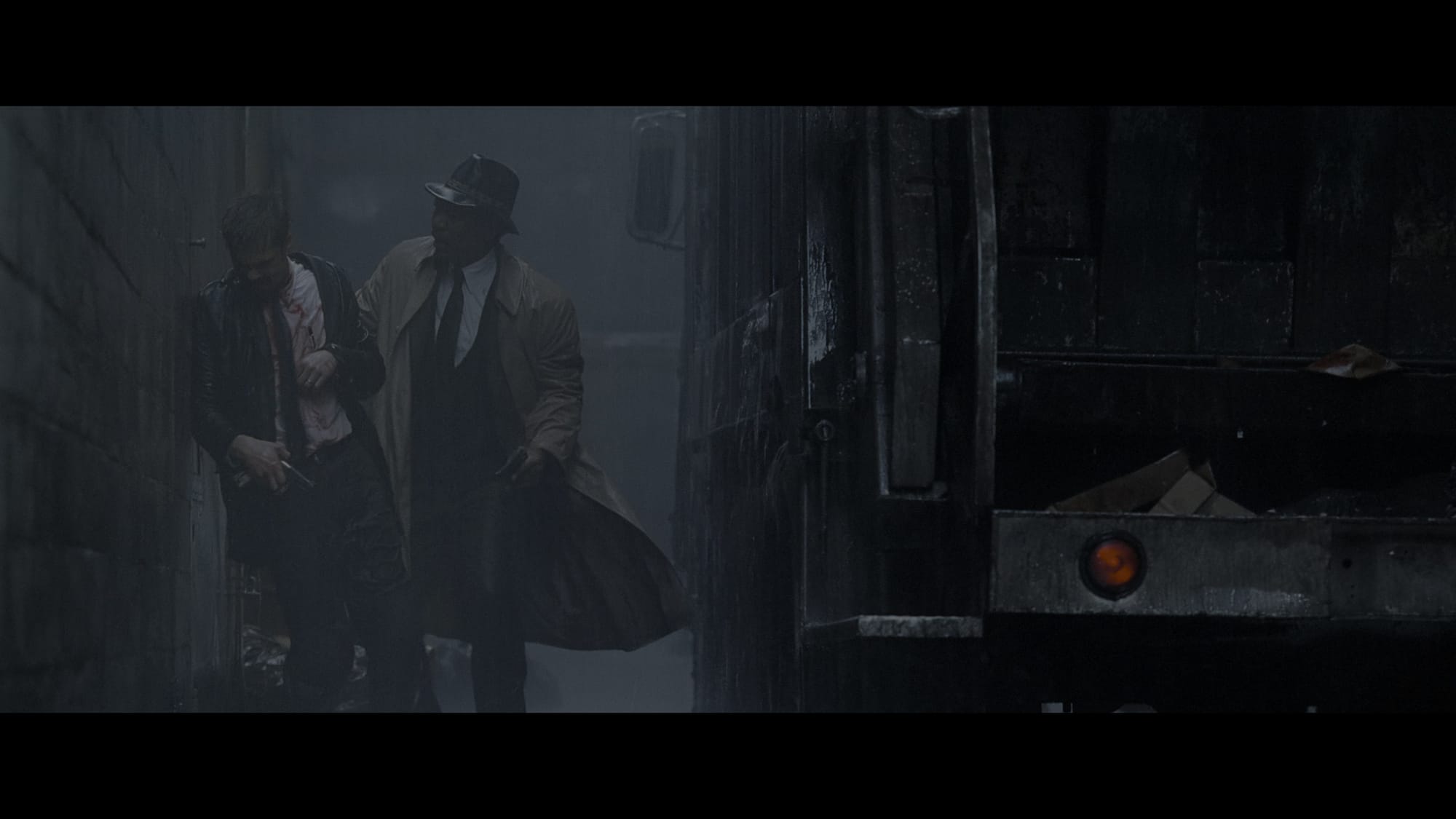
My takeaway from this edition of Seven is that the film looks more alive than it has since I was first trapped with it in that tiny Cineplex screening room. The expanded dynamic range deepens incidental shadows into a darkness that threatens to swallow our heroes at every turn, and gives John Doe a hiding place in every location. Even when we see him for the first time, we’re not really allowed to see him – and once he’s cornered, the movie’s big chase scene is almost monochromatic, painted in drab grays and browns that are washed out even further by cloud cover and hammering rain and tracked with a wall of sound effects that place us in the middle of the frenzy. (The restoration’s soundtrack has been remastered in DTS-HD 5.1, scaled back from the 7.1 Blu-ray mix to bring the experience back into line with the theatrical presentation. It’s an outstanding, immersive track.)
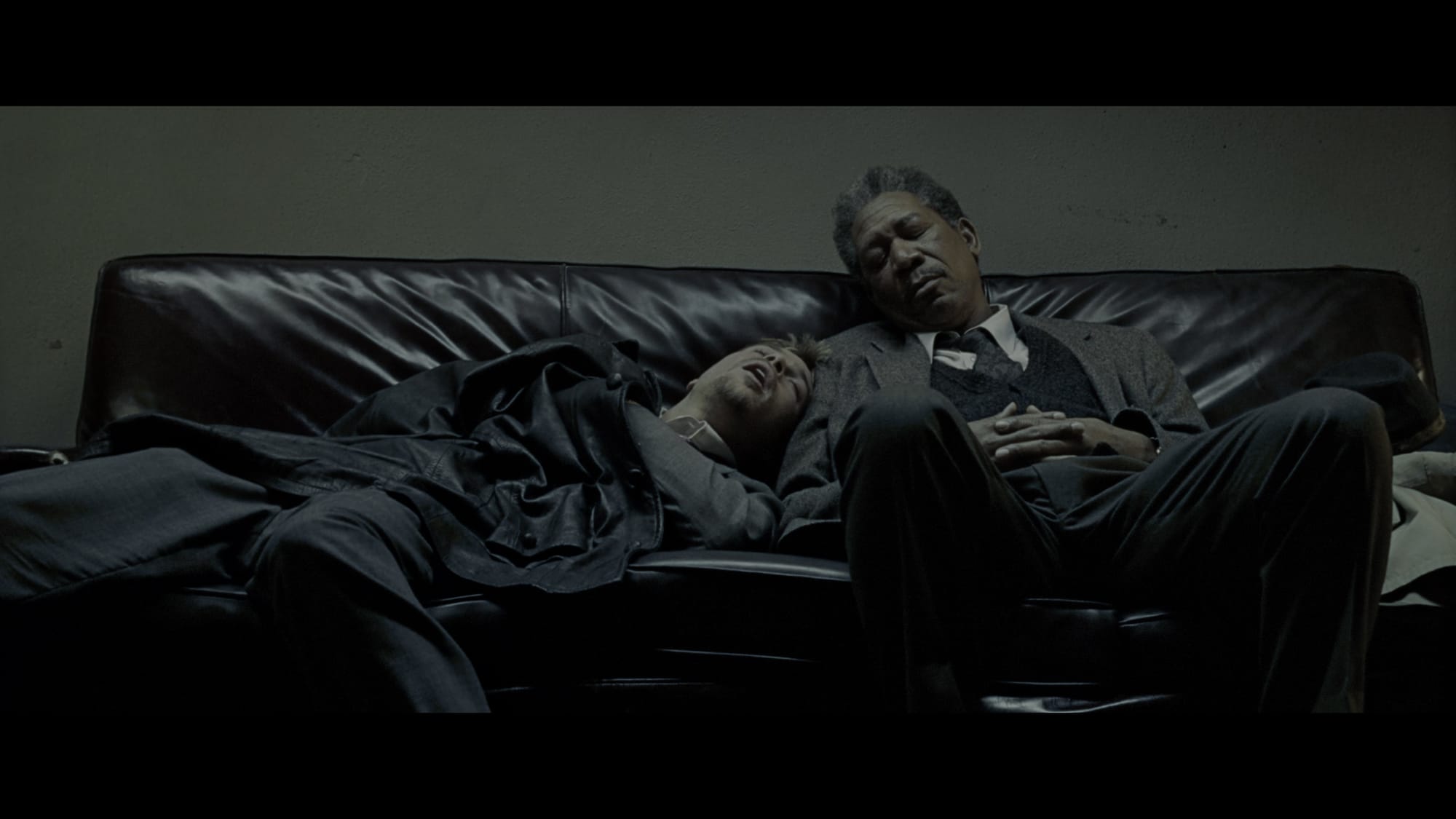
There are no new supplements, but Seven is a film that’s been obsessively documented from the very beginning. Criterion’s bespoke supplements (an excellent cast-and-crew commentary, a longish look at Rob Bottin’s makeup effects) remain exclusive to that long-ago release, but nearly all of the studio materials and extras produced for New Line’s subsequent double-disc DVD special edition are here: Four commentary tracks (“The Stars”, “The Story”, “The Picture”, “The Sound”), each one offering different angles on the production; deleted scenes and alternate endings, featurettes on the production design and the opening titles, still galleries and the original EPK.
I was surprised to find the incredibly detailed – if now charmingly obsolete – “Mastering for Home Theater” featurette here as well, even though it's about the now-outdated process employed to bring Seven to DVD. Really, the one thing missing is a look at the process of remastering the film for its 4K and IMAX incarnations, which would have been something to see. Maybe it’s hidden as an Easter Egg. Or maybe it’s waiting in a box somewhere. That would be appropriate too.
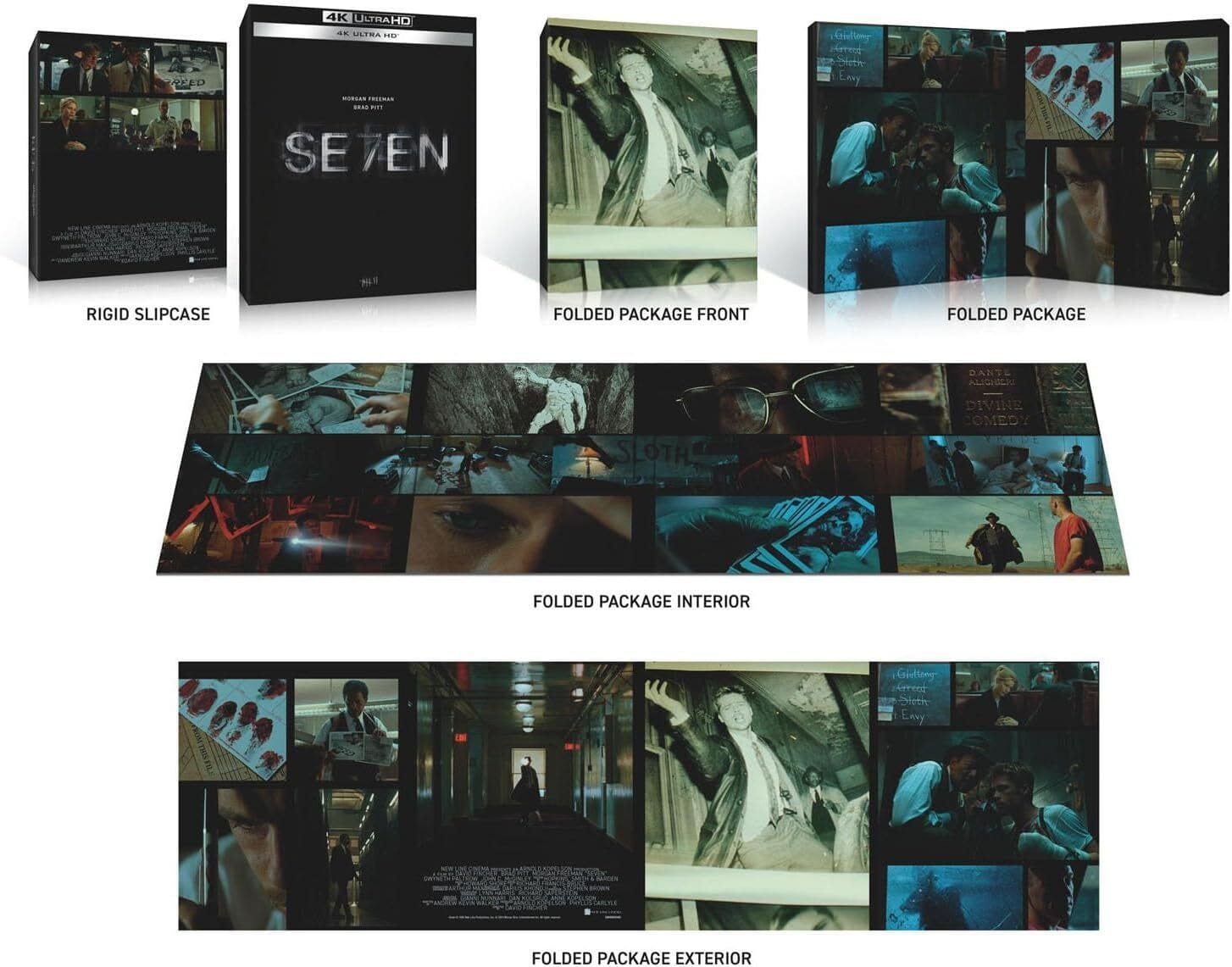
Seven is now available in 4K from Warner Home Entertainment in both a very impressive DigiPak, pictured above, and a steelbook.
Up next: Well, that depends on what comes in the mail. But Conclave, We Live in Time and Saturday Night all hit the shelves this week, so it’s not like there’s nothing to choose from! And subscribers to the paid tier will enjoy the return of the What’s Worth Watching alert tomorrow morning.
… you’re not on the paid tier? Why, that’s practically a sin. Upgrade that membership today, please and thank you.
